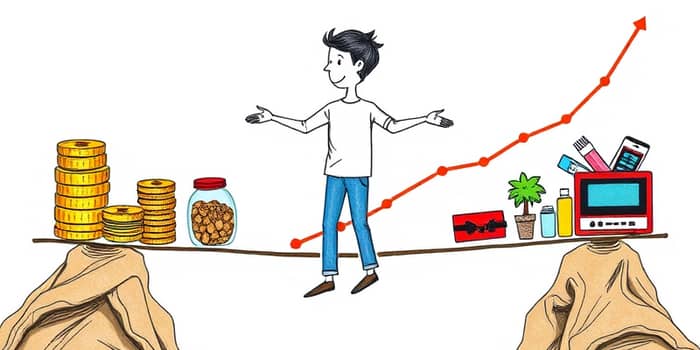
Over time, small spending increases can quietly erode your ability to achieve major milestones. Recognizing this pattern is the first step to steering your finances in the right direction.
Lifestyle creep, also known as lifestyle inflation, describes how your spending increases as income rises. As you earn more, everyday luxuries become normalized, turning once-special treats into basic necessities. This escalation often happens subtly; you might not notice incremental upgrades to your housing, transportation, or entertainment until expenses balloon.
Common triggers include promotions, annual raises, or financial windfalls like bonuses or gifts. While rewarding yourself can be motivating, unchecked upgrades often lead to a situation where savings stagnation despite higher earnings becomes the norm. Identifying the fine line between wise indulgence and financial overreach is key to maintaining balance.
Detecting lifestyle creep early can save you from long-term setbacks. Watch for the following patterns:
These signs often co-occur. For example, accumulating unused subscriptions can mask the true impact of your spending habits, while the “treat yourself” mentality escalates costs without adding lasting value.
Understanding the mental forces driving lifestyle creep empowers you to counteract them. Three major dynamics are at play:
By recognizing these psychological triggers, you can pause and question each new expense, resisting the urge to follow a consumption spiral that undermines your financial well-being.
Allowing expenses to climb in step with earnings can derail even the most carefully laid plans. Here’s how unchecked lifestyle inflation affects core objectives:
1. Reduced Savings Rate: Extra income channels into consumption instead of boosting contributions to retirement accounts or investments. Without adjustments, your compound growth potential diminishes, creating a “catch up” hurdle later.
2. Delayed Milestones: Key events—purchasing a home, funding children’s education, or launching a business—can stall when funds are tied up in discretionary spending.
3. Increased Financial Vulnerability: A smaller emergency fund heightens stress during job loss or economic downturns, making you more reactive than proactive.
4. Debt Cycle: Relying on credit cards to maintain an elevated lifestyle risks accumulating high-interest debt, which further restricts financial flexibility.
5. Retirement Strain: Sustaining an inflated standard of living on a fixed retirement income may rapidly deplete savings, threatening your golden years.
Building resilience against inflationary spending involves deliberate planning and disciplined habits. Consider these actionable steps:
Implementing these measures not only curbs unnecessary spending but also accelerates wealth creation. By building a habit of allocating more of your income to savings rather than consumption, you establish a virtuous cycle of financial strength rather than succumbing to incremental inflation.
Lifestyle creep may seem harmless at first, but its cumulative effect can compromise your ability to reach significant life goals. By defining priorities, tracking spending patterns, and automating your savings, you reclaim control over your financial narrative. Every raise or bonus becomes an opportunity to invest in your future rather than a permission slip for extra indulgence.
Embrace a mindful approach to consumption and commit to periodic reviews of your financial plan. This proactive stance ensures that your increased income fuels progress rather than perpetuating a cycle of inflationary expenses. With awareness and discipline, you can transform potential pitfalls into stepping stones toward lasting prosperity.
References













